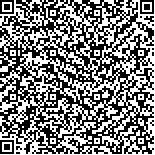| 马艳玲,钱立庭,魏东华.2014—2017年安徽省合肥市城市肝癌高危人群筛查依从性及其相关影响因素分析[J].中国肿瘤,2021,30(12):895-900. |
| 2014—2017年安徽省合肥市城市肝癌高危人群筛查依从性及其相关影响因素分析 |
| The Compliance of Liver Cancer Screening and Related Influencing Factors in Hefei City of Anhui Province from 2014 to 2017 |
| 中文关键词 修订日期:2021-09-30 |
| DOI:10.11735/j.issn.1004-0242.2021.12.A003 |
|
 |
| 中文关键词: 筛查 依从性 影响因素 安徽 |
| 英文关键词:liver cancer screening compliance influencing factors Anhui |
| 基金项目:国家重大公共卫生服务专项 |
|
| 摘要点击次数: 1616 |
| 全文下载次数: 423 |
| 中文摘要: |
| 摘 要:[目的] 分析2014—2017年安徽省合肥市城市肝癌高危人群筛查依从性(筛查率)及其影响因素。[方法] 采取整群抽样的方法,对合肥市7个区40~74岁常住居民进行癌症危险因素问卷调查和肝癌高危因素评估,对评估出的肝癌高危人群进行抽血甲胎蛋白检测及腹部B超检查,计算肝癌高危人群筛查率。采用χ2检验比较不同特征人群肝癌筛查率差异,采用多因素Logistic回归模型分析肝癌筛查率相关影响因素。[结果] 2014—2017年共78 431名居民完成问卷调查和肝癌高危风险评估,评估出肝癌高危人群14 383人,肝癌高危率为18.34%。共7 165人参加了肝癌筛查,肝癌筛查率49.82%。多因素Logistic回归分析结果显示:女性、少数民族、吸烟、正在饮酒、精神创伤史、慢性乙型肝炎病史、肝硬化病史、脂肪肝病史、胆结石病史、肝癌家族史的肝癌高危人群更易参加肝癌临床筛查(P均<0.05);与2014—2015年度相比,2015—2016年度和2016—2017年度评估出的肝癌高危人群更不易于接受肝癌筛查(P<0.05);体重过轻或肥胖、受教育程度较低以及经常体育锻炼的肝癌高危人群更不易于接受肝癌筛查(P均<0.05)。[结论] 安徽省合肥市肝癌高危人群筛查依从性较低,应进一步完善筛查机制,提高肝癌高危人群筛查依从性,提高筛查效果及防控水平。 |
| 英文摘要: |
| Abstract:[Purpose] To analyze the compliance of liver cancer screening and related influencing factors in Hefei City of Anhui Province from 2014 to 2017. [Methods] A liver cancer screening program was conducted among permanent residents aged 40~74 in seven districts of Hefei using cluster sampling method from 2014 to 2017. The risk factor assessment questionnaire was used for primary screening, and the identified high-risk subjects of liver cancer were subject to undergo clinical screening including ultrasound examination and serum AFP test. The screening rate of high-risk subjects were calculated. Chi-square tests were used to compare the difference in the screening rate of liver cancer among different groups. Multivariate Logistic regression model was used to analyze influencing factors related to the screening rate of liver cancer. [Results] A total of 78 431 residents completed questionnaires risk assessments from 2014 to 2017; 14 383 subjects were identified as high-risk of liver cancer, with the high-risk rate of 18.34%, among whom 7 165 subjects underwent clinical screening with a screening rate of 49.82%. The multivariate Logistic regression analysis showed that subjects with female sex, ethnic minorities, smoking, current drinking and history of psychological trauma, chronic hepatitis B, liver cirrhosis, fatty liver, cholelithiasis and family history of liver cancer were more likely to participate in clinical screening(all P<0.05). Compared with subjects enrolled during 2014 to 2015, those enrolled during 2015 to 2016 and 2016 to 2017 were less likely to accept liver cancer screening(P<0.05). Subjects with high risk of liver cancer who were underweight, obese, less educated and exercise regularly were less likely to accept liver cancer screening(all P<0.05). [Conclusion] The screening compliance of high-risk population for liver cancer is low in Hefei City. The program mechanism should be improved to increase the liver cancer screening compliance. |
|
在线阅读
查看全文 查看/发表评论 下载PDF阅读器 |
|
|
|